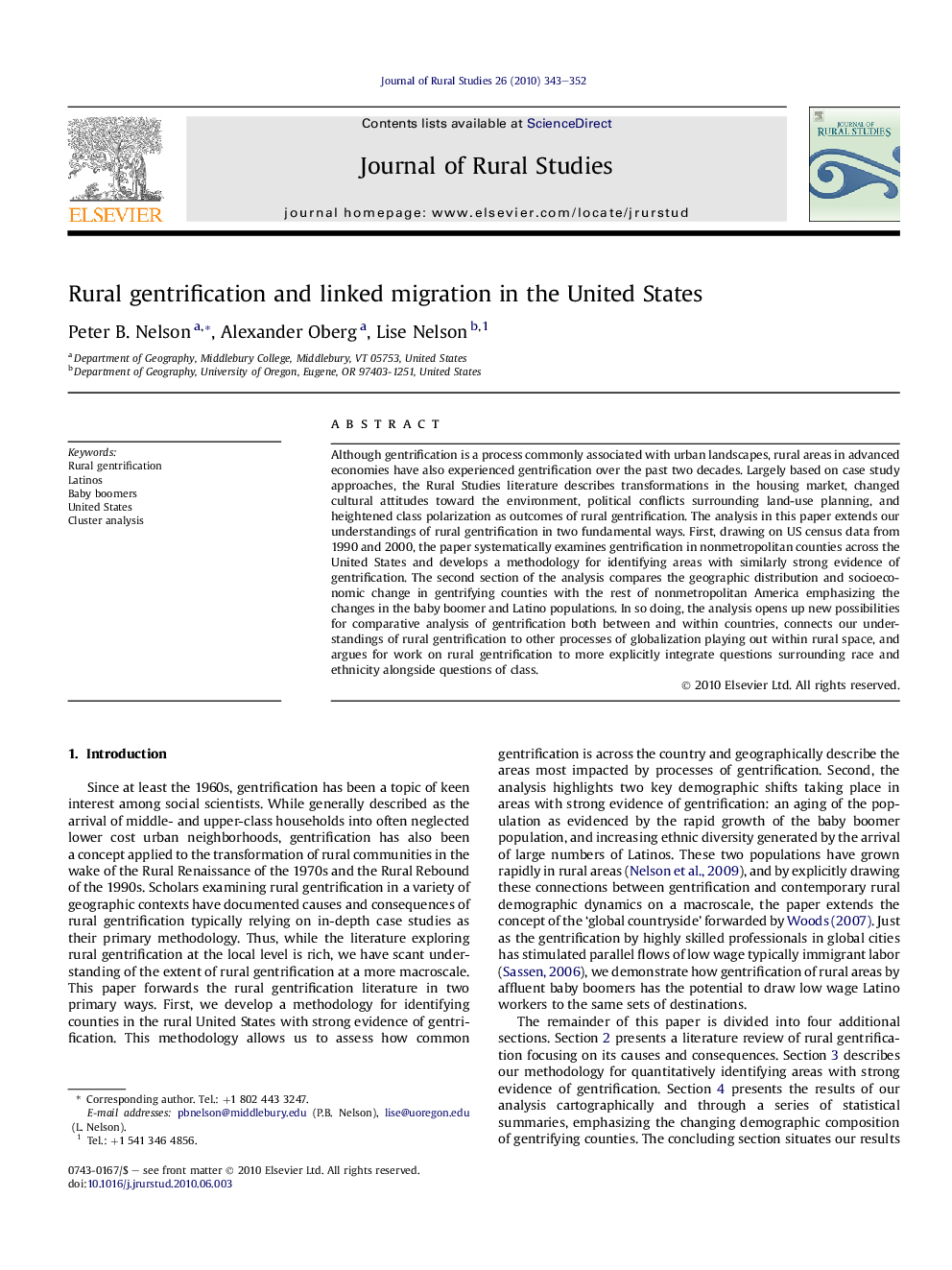| Article ID | Journal | Published Year | Pages | File Type |
|---|---|---|---|---|
| 92758 | Journal of Rural Studies | 2010 | 10 Pages |
Although gentrification is a process commonly associated with urban landscapes, rural areas in advanced economies have also experienced gentrification over the past two decades. Largely based on case study approaches, the Rural Studies literature describes transformations in the housing market, changed cultural attitudes toward the environment, political conflicts surrounding land-use planning, and heightened class polarization as outcomes of rural gentrification. The analysis in this paper extends our understandings of rural gentrification in two fundamental ways. First, drawing on US census data from 1990 and 2000, the paper systematically examines gentrification in nonmetropolitan counties across the United States and develops a methodology for identifying areas with similarly strong evidence of gentrification. The second section of the analysis compares the geographic distribution and socioeconomic change in gentrifying counties with the rest of nonmetropolitan America emphasizing the changes in the baby boomer and Latino populations. In so doing, the analysis opens up new possibilities for comparative analysis of gentrification both between and within countries, connects our understandings of rural gentrification to other processes of globalization playing out within rural space, and argues for work on rural gentrification to more explicitly integrate questions surrounding race and ethnicity alongside questions of class.
